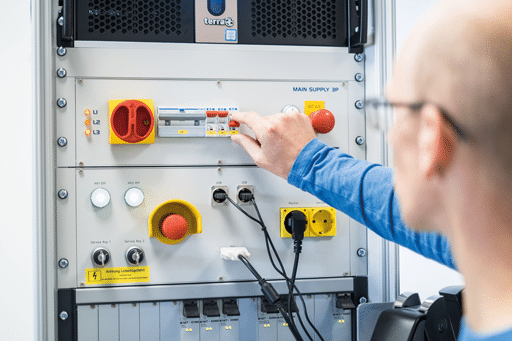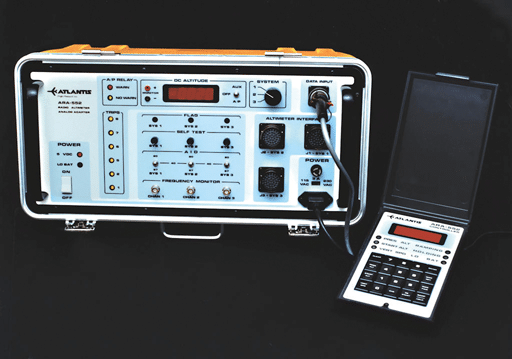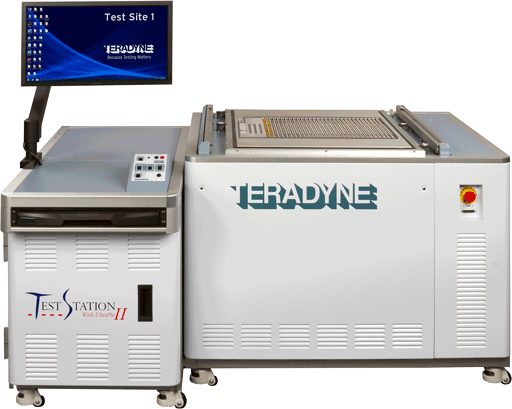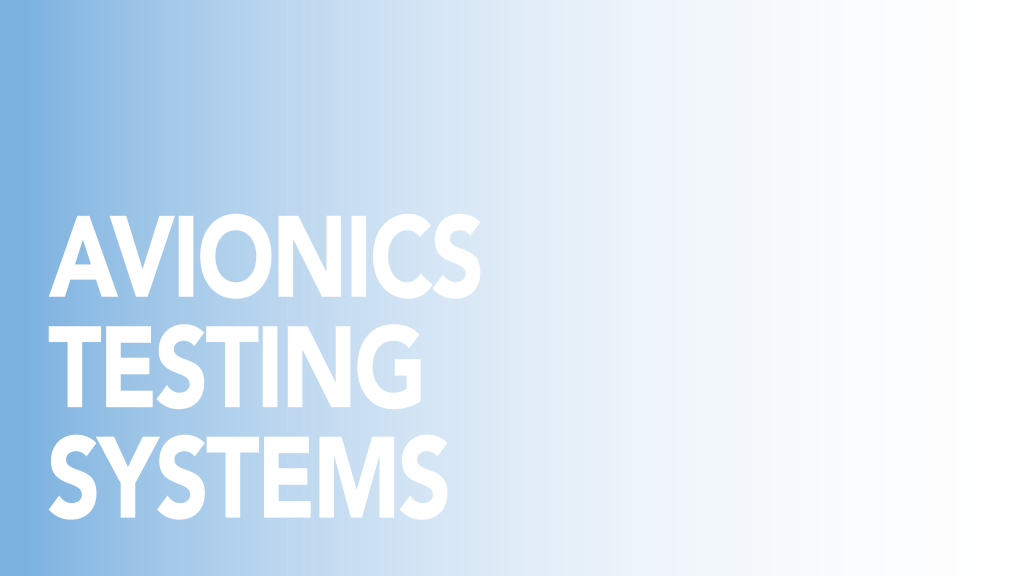Testing for unexpected avionics problems helps planes safely operate as scheduled.
Avionics systems play a critical role in aircraft safety and performance. Avionic systems manufacturers and designers must be confident in the reliability, endurance and safety of aircraft and engine components’ subsystems and full systems. Avionics test equipment used during the manufacturing and maintenance of aircraft avionics systems helps planes operate as scheduled and at peak efficiency. Also, this equipment assists engineers and aircraft companies ensure full compliance with heavily controlled federal regulations, specifications and standards. Aircraft structures must go through many levels of testing before receiving airworthiness certification by the Federal Aviation Administration (FAA) or Department of Defense (DoD).
Essential Equipment
Some consider avionics repair and testing equipment to be the most essential equipment used in the production, troubleshooting, repair and maintenance of aircraft and their avionics systems and instruments. Primarily used for calibration, inspection, evaluation and testing of various aircraft devices, avionic testing systems aim to inspect and resolve electrical and mechanical issues, conduct performance checks, and repair the brakes and other components of the aircraft.
The quantity and diversity of equipment and systems requiring testing in avionic systems equates to an equally complex range of test equipment. Avionics test equipment can be divided into two categories: general test equipment and specific test equipment. General test equipment can be used to perform tests on avionics systems in general, such as diagnostics, fault detection, and performance measurements. Specific test equipment is more specific and is used to test specific components or systems of a particular type of aircraft.
Actual test system equipment covers items from signal generators and digital voltmeters to autopilot servo test stands for clutch torque evaluation. Vacuum and pressure instrument chambers, manual turn and tilt tables, single axis rate tables and tachometer testers are some other common aviation test equipment. Bench-type equipment is primarily used for repair and alignment of avionics equipment and normally is larger in size than the smaller portable equipment used to service the aircraft on the ramp for troubleshooting.
Standard tensile, compression, shear and fatigue coupon tests, using the material properties quantified in these tests, help determine component material composition, dimensions, and joining methods. Designs must then be verified by testing individual components, systems, and entire airframe structures. Component and airframe tests allow for interactions between parts of an aircraft, providing the most realistic test scenario possible without actually flying the aircraft. Like coupon tests, full-scale airframe tests are conducted in static and fatigue loadings and can be conducted on undamaged or damaged airframes.

Common Types
While there are hundreds of different aviation test equipment apparatus, here are two of the most common.
Over the past two decades performance flight testing of full-scale aircraft has transferred some of the testing workload to simulation-based systems. In addition to simulating flight conditions with their 3-D capabilities, simulators can create a realistic environment for aircraft system testing. They can find errors in aircraft functions, systems, and components in real time.
A computer simulation-based environment is not only less expensive than flight testing full-scale aircraft in a real-world environment but all the aircraft’s systems can be modelled in the simulation. In addition to mathematical modelling, other technologies behind simulation testing include real-time computation, motion actuation, visual image-generation systems and projection systems. All the aircraft’s systems, such as avionics and sensors, can be directly built into the simulation just as they would be on the actual aircraft. Simulation tests allow the use of extra measurement equipment that might be too large or otherwise impractical to include on board a real aircraft. Throughout different phases of the design process, different engineering simulators with various levels of complexity are typically used.
Benchtop test systems also provide a realistic environment for testing aircraft systems. Compared to simulators they are more compact, more portable, lighter in weight, less power-hungry, and require fewer maintenance personnel. They are also less expensive than simulators and can be used to test a wider range of aircraft systems. Many benchtop test systems are configurable and scalable. They can solve typical functional test coverage challenges throughout an aerospace product’s life cycle — and many are upgradable as test requirements evolve.
A testament to the versatility of benchtop aviation test equipment, Severn Beach, Solihull, United Kingdom-based GKN Aerospace has patents approved covering a new benchtop ice adhesion test device which incorporates apparatus to simulate icing conditions and then determine ice adhesion in situ. This will enable swifter, less costly assessment of promising ice phobic coatings and other ice protection technologies. Efficient ice protection systems lower power consumption, improving aircraft efficiency and lowering emissions.
Nondestructive Testing
Two of the most important methods for aircraft testing include the nondestructive procedures eddy current testing (ECT) and ultrasonic testing (UT). Compared to other NDT methods, ECT and UT can detect more flaws in less time and without the hassle of extensive setup times. With ECT, NDT analysts can cover surface defects and near-surface defects with greater efficiency and speed. UT also probes the same anomalies on a volumetric level and with the same expediency.
There are tools and equipment available that enhance ECT and UT functionality. This includes instrumentation with specialized capabilities that foster flexible scans and additional customization schemes. These are instruments capable of phased array ultrasonic testing (PAUT) and eddy current array (ECA), the most effective NDT methods of all the currently available options for commercial aircraft inspections.
Conventional ultrasound is more advanced than most NDT techniques and phased array ultrasound is better still. Traditional UT has inflexible scanning positions and limited customization options, preventing analysts from finding flaws in awkward angles. With PAUT however, inspectors can customize the beam shapes, adjusting the focus depths and achieve several angles. PAUT addresses the inconsistent thickness patterns of aircraft components. It’s also malleable enough to conform to the shape and texture of any component being tested.

Eddy current array enhances conventional eddy current testing through the multi-coil features in a single probe. The additional coils allow NDT inspectors to scan a wider radius while detecting more defects in less time. ECA has a very good best signal-to-noise rate (SNR), which boosts the probability of detection (POD). ECA probes can also spot hard-to-find anomalies in the form of pitting, surface cracks and corrosion.

Other Testing
Other aerospace tests include:
• Dynamic testing. Vibration, shock and acoustic noise dynamic testing equipment are in this group. Most vibration tables and shakers are capable of delivering up to 70,000 force/pounds, acceleration forces up to 750g and pyro-shock capabilities.
• Stress analysis and failure assessment. Materials fracture mechanics, fatigue, finite element analysis, inspection and welding tests are in this group to provide failure analyses.
• Cloud testing. This is a centralized testing system where testing data can be uploaded for all interested parties to view and interpret in real-time. Engineers can obtain information from testing data from other similar aircraft. They can then use this data to correlate with their own inspection.
• Environmental simulation. Environmental simulation chambers can test everything from individual devices to complete systems. Combined environment testing including temperature, humidity, altitude and vibration, explosive atmospheres, sand and salt fog and more are in this group.
• Fuel testing. Overall efficiency and performance of all-important fuel tank and fuel system components can be tested in this group. Fuel icing and contamination of fuel testing, helium leak tests, flow analysis, functional/qualification testing are available.
Testing Standards
Many standard test methods have been created for testing certain aviation materials. These test methods are published and updated by standards organizations such as ASTM, ISO, CEN, NASM, and DIN. Some of the more common include:
• ISO 6892-1 & 2 Metal Tensile Testing
• ISO 527 – Tensile Test of Plastics Composites
• ASTM C1273 Tensile Ceramic Test Equipment
• ASTM C1424 Compression Ceramics Test Machine
• ASTM D638 Tensile Testing for Plastics
• ASTM D695 Compression Testing for Rigid Plastics
• ASTM D4762 Polymer Matrix Fiber Reinforced Composites Test Equipment
• ASTM E9 Compression Testing of Metallic Materials at Room Temperature
• ASTM E8 Tension Testing of Metallic Materials
Avionic testing equipment can involve testing and simulation using standards such as MIL-STD-1553 and ARINC-429 and embedded systems such as multi-protocol modules and interfaces.
RTCA DO-160
RTCA DO-160 (Environmental Conditions and Test Procedures for Airborne Equipment) covers standard procedures and environmental test criteria for testing airborne electronic equipment and mechanical systems with numerous regulatory requirements. It ensures airborne equipment meet the airworthiness requirements for fixed-wing and rotary-wing aircraft. The most current revision, RTCA DO-160G, specifies tests that are typically performed to meet the requirements of the Federal Aviation Administration (FAA) and other regulatory bodies for equipment installed on aircraft. It has become a common testing standard recognized throughout the aerospace industry.
RTCA DO-160 is used by all major aircraft manufacturers to ensure that electronic systems and components are safe and reliable in any environmental condition. It is applicable for any aircraft, from business jets and helicopters to full-scale airliners. It includes 23 sections of test methods covering all aspects of the aircraft environment from temperature, altitude, shock, and vibration to RF emissions, lightning effects, and flammability.
